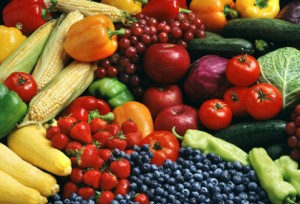This September, Medical Department Store is celebrating Fruits and Vegetables Month with our blogs! Fruits and vegetables help make up the healthy food groups you’re supposed to eat every day. Today, we’ll talk about what fruits are, what foods are considered fruits and the healthy benefits of eating them.
Telling the true difference between fruits and vegetables is hard because not all vegetables are fruits and not all fruits are vegetables. Makes sense right? Fruits are defined as sweet and fleshy products of a tree or other plants that contain seeds and can be eaten as food.
As you get older, the amount of fruit recommended for daily intake changes. It also depends on your gender and level of physical activity. When you’re young, you usually would eat about one cup of fruit a day where 50+ year old individuals are recommended to have two cups a day, while participating in 30 minutes of physical activity.
There are many different fruits to choose from and many different variations of those fruits. Fruits can be whole or squeezed into very tasteful juices or smoothies. The more common fruit juices are orange, apple, grape and grapefruit. Here is a list of whole fruits that you could include into your diet:
- Apples
- Apricots
- Avocado
- Banana
- Berries – multiple variations
- Grapefruit
- Watermelon
- Strawberries
- Raisins
- Plums
- Pears
- Oranges
- Coconut
- Lemon
- Lime
Getting more fruits in your diet can help maintain a healthy weight and be a great snack in return. It can help reduce your risk of disease and help get you back on your feet after being sick. Fruits contain very helpful nutrients such as potassium, dietary fiber, and vitamin C and are naturally low in fat, sodium, and calories. No fruit has cholesterol, another thing to worry about at your age.
Medical Department Store doesn’t have a fruit stand, but we do promote having a healthy diet and eating great fruits. Check out our bariatric equipment and our full line of portable oxygen concentrators today!
Tags: Diet, Fruits, Healthy Living


)
